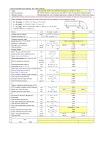
Welding is a fabrication process whereby two or more parts are fused together by means of heat, pressure or both forming a join as the parts cool. Welding is usually used on metals and thermoplastics but can also be used on wood. The completed welded joint may be referred to as a weldment.
Many different energy sources can be used for welding, including a gas flame (chemical), an electric arc (electrical), a laser, an electron beam, friction, and ultrasound. While often an industrial process, welding may be performed in many different environments, including in open air, under water, and in outer space. Welding is a hazardous undertaking and precautions are required to avoid burns, electric shock, vision damage, inhalation of poisonous gases and fumes, and exposure to intense ultraviolet radiation.
Some of the most common current welding methods are:
- Shielded metal arc welding (SMAW), also known as "stick welding."
- Gas tungsten arc welding (GTAW), also known as TIG (tungsten, inert gas).
- Gas metal arc welding (GMAW), also known as MIG (metal, inert gas).
- Flux-cored arc welding (FCAW), very similar to MIG.
- Submerged arc welding (SAW), usually called Sub Arc.
- Electroslag welding (ESW), a highly productive process for thicker materials.
In these Article we are providing you a PDF file of WELDING FORMULAS and TABLES for STRUCTURAL and MECHANICAL ENGINEERS and PIPE SUPPORT DESIGNERS
PLEASE CLICK ON BELOW DOWNLOAD LINKS












0 Comments